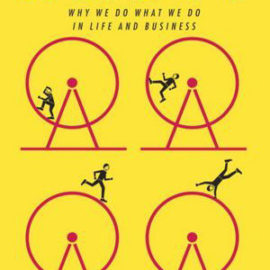
Want to learn the ideas in Thank You For Arguing better than ever? Read the world’s #1 book summary of Thank You For Arguing by Jay Heinrichs here.
Read a brief 1-Page Summary or watch video summaries curated by our expert team. Note: this book guide is not affiliated with or endorsed by the publisher or author, and we always encourage you to purchase and read the full book.
Video Summaries of Thank You For Arguing
We’ve scoured the Internet for the very best videos on Thank You For Arguing, from high-quality videos summaries to interviews or commentary by Jay Heinrichs.
1-Page Summary of Thank You For Arguing
Overall Summary
In Thank You for Arguing, Jay Heinrichs argues that rhetoric—the study of argument and persuasion—can help people understand the world and succeed.
In part one, Heinrichs explores the basics of arguing. Every argument has three steps: first, stimulating people’s emotions; second, changing their opinions; and third, getting them to do or choose something. There are also three kinds of arguments: forensic (which is concerned with blame and takes place mostly in the past tense), demonstrative (which is concerned with values and takes place mostly in the present tense), and deliberative (which is concerned with choices and takes place mostly in the future tense). Furthermore, Aristotle developed another important distinction between logos, ethos, pathos.
In the rest of the first part, Heinrichs discusses logos, ethos, and pathos. To increase your ethos (your character), you’ll want to use decorum (fitting in with your audience). Decorum involves dressing appropriately, using words that your audience identifies with, being virtuous (sharing values), having practical wisdom (being a capable person), and being morally disinterested (having the best interests of your audience at heart).
Persuaders need to appeal to the audience’s emotions. One of the most powerful ways is by using humor. Another technique is appearing to hold back one’s emotions. Advertisers often use pathos in their advertisements, appealing to people’s desires like sexual ones.
One of the most important aspects of logos is to define terms in a way that benefits your argument. You can do this by using definitions that work for you, or by agreeing with your opponent’s definition and turning it against them. Logic also plays an important role, as does making deductions from syllogisms or generalizing through inductive logic based on examples.
In Part Two, Defense, Heinrichs begins by discussing how to identify logical fallacies in arguments. He writes that these fallacies can help rhetoricians take control of the argument and expose their opponents as irrational thinkers. Common logical fallacies include false comparisons (drawing a bad analogy), the bad example (generalizing from insufficient evidence), ignorance as proof (mistaking absence of evidence for evidence of absence), tautology (offering a conclusion as proof for itself), the false choice (narrowing an audience’s decisions) and more. Heinrichs stresses that when people use logical fallacies, good rhetoricians won’t just call them out; they’ll find ways to show why those arguments are wrong while seizing the higher ground and moving forward with their own points. In Parts Three through Five, Heinrichs discusses ethos appeal strategies: logos appeals in Part Three; pathos appeals in Part Four; and kairos appeals in Part Five.
In part three, Heinrichs discusses how to make rhetorical arguments more effective. There are many figures of speech and figures of thought that can be used to make an argument seem simple or concise. Good rhetoricians must also use code grooming; they should immerse themselves in their audiences’ favorite words so that the audience will find them persuasive. As a consultant, Heinrichs pioneered a technique called the halo: offering a symbol that encapsulates a complex idea. Many talented speakers use halos as shorthand for their ideas.
In the rest of Part 3, Heinrichs covers how to apologize and when to speak. A good apology should not belittle the audience’s problems and should highlight the apologizer’s practical wisdom. The right time for an argument is also important; it depends on a speaker’s ability to read his or her audience.





